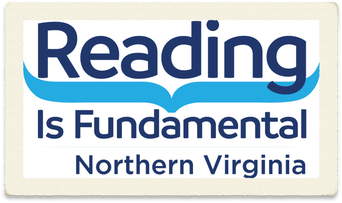CHILDREN'S BOOKS -- SOMETHING FOR EVERYONE!
In the children's book industry, there is something for everyone -- on just about any topic imaginable. From cloth and board books for little ones to middle grade and young adult books, the range of selections is endless. We've put together several resource pages with links to websites on specific book topics. We are always looking for new links and adding new topics, so if you have ideas to suggest, please email us at [email protected]. Click on the resource links below to find each topic that is currently listed:
• Olympics & Sports Books Resources
• Graphic Novel Resources
• Strong Girls/Women Book Resources
• Black History Month & Diverse Book Resources
• Hispanic American/Latinx Heritage Book Resources
• Asian American Book Resources
• Book Resources about the Environment
• Financial Literacy Children's Book Resources
An article on the website Lionstory, a business that produces personalized books, featured a list of trends for 2023, which look to be continuing in 2024. The article linked and also copied below.
10 Children’s Book Trends to Watch in 2023:
1. Diversity and Inclusion
Diversity and inclusion have been ongoing trends in children’s literature, but it is set to become even more important in 2023. The world is becoming more diverse, and children’s literature needs to reflect this. This trend will involve a focus on stories that represent underrepresented communities and diverse protagonists.
2. Interactive Storytelling
In 2023, children’s books will go beyond traditional storytelling. Interactive storytelling will be a trend that encourages readers to engage with the story in different ways. This can include augmented reality, interactive illustrations, and choose-your-own-adventure books.
3. Mental Health and Well-being
As mental health issues become more prevalent in young people, children’s literature will focus on mental health and well-being. This trend will involve books that address anxiety, depression, and other mental health issues in a relatable and accessible way.
4. Sustainable Living
With growing concerns about the environment, children’s books will focus on sustainable living in 2023. This trend will involve stories that promote eco-friendly living and encourage children to take action to protect the planet.
5. Non-Fiction
Non-fiction children’s books are set to become even more popular in 2023. This trend will involve a focus on educational books that teach children about history, science, and other topics in an engaging and interactive way.
6. STEM Education
STEM (Science, Technology, Engineering, and Math) education will be an ongoing trend in children’s literature. With a focus on preparing children for the future, books that teach STEM concepts in a fun and accessible way will become more popular in 2023.
7. Social Justice
Social justice will be an important trend in children’s literature in 2023. This will involve stories that address social issues such as racism, discrimination, and inequality. These books will help children understand the world around them and inspire them to make a positive difference.
8. Graphic Novels
Graphic novels have been growing in popularity in recent years, and this trend will continue in 2023. This format allows for a unique and engaging way of storytelling that appeals to children of all ages.
• Olympics & Sports Books Resources
• Graphic Novel Resources
• Strong Girls/Women Book Resources
• Black History Month & Diverse Book Resources
• Hispanic American/Latinx Heritage Book Resources
• Asian American Book Resources
• Book Resources about the Environment
• Financial Literacy Children's Book Resources
An article on the website Lionstory, a business that produces personalized books, featured a list of trends for 2023, which look to be continuing in 2024. The article linked and also copied below.
10 Children’s Book Trends to Watch in 2023:
1. Diversity and Inclusion
Diversity and inclusion have been ongoing trends in children’s literature, but it is set to become even more important in 2023. The world is becoming more diverse, and children’s literature needs to reflect this. This trend will involve a focus on stories that represent underrepresented communities and diverse protagonists.
2. Interactive Storytelling
In 2023, children’s books will go beyond traditional storytelling. Interactive storytelling will be a trend that encourages readers to engage with the story in different ways. This can include augmented reality, interactive illustrations, and choose-your-own-adventure books.
3. Mental Health and Well-being
As mental health issues become more prevalent in young people, children’s literature will focus on mental health and well-being. This trend will involve books that address anxiety, depression, and other mental health issues in a relatable and accessible way.
4. Sustainable Living
With growing concerns about the environment, children’s books will focus on sustainable living in 2023. This trend will involve stories that promote eco-friendly living and encourage children to take action to protect the planet.
5. Non-Fiction
Non-fiction children’s books are set to become even more popular in 2023. This trend will involve a focus on educational books that teach children about history, science, and other topics in an engaging and interactive way.
6. STEM Education
STEM (Science, Technology, Engineering, and Math) education will be an ongoing trend in children’s literature. With a focus on preparing children for the future, books that teach STEM concepts in a fun and accessible way will become more popular in 2023.
7. Social Justice
Social justice will be an important trend in children’s literature in 2023. This will involve stories that address social issues such as racism, discrimination, and inequality. These books will help children understand the world around them and inspire them to make a positive difference.
8. Graphic Novels
Graphic novels have been growing in popularity in recent years, and this trend will continue in 2023. This format allows for a unique and engaging way of storytelling that appeals to children of all ages.

